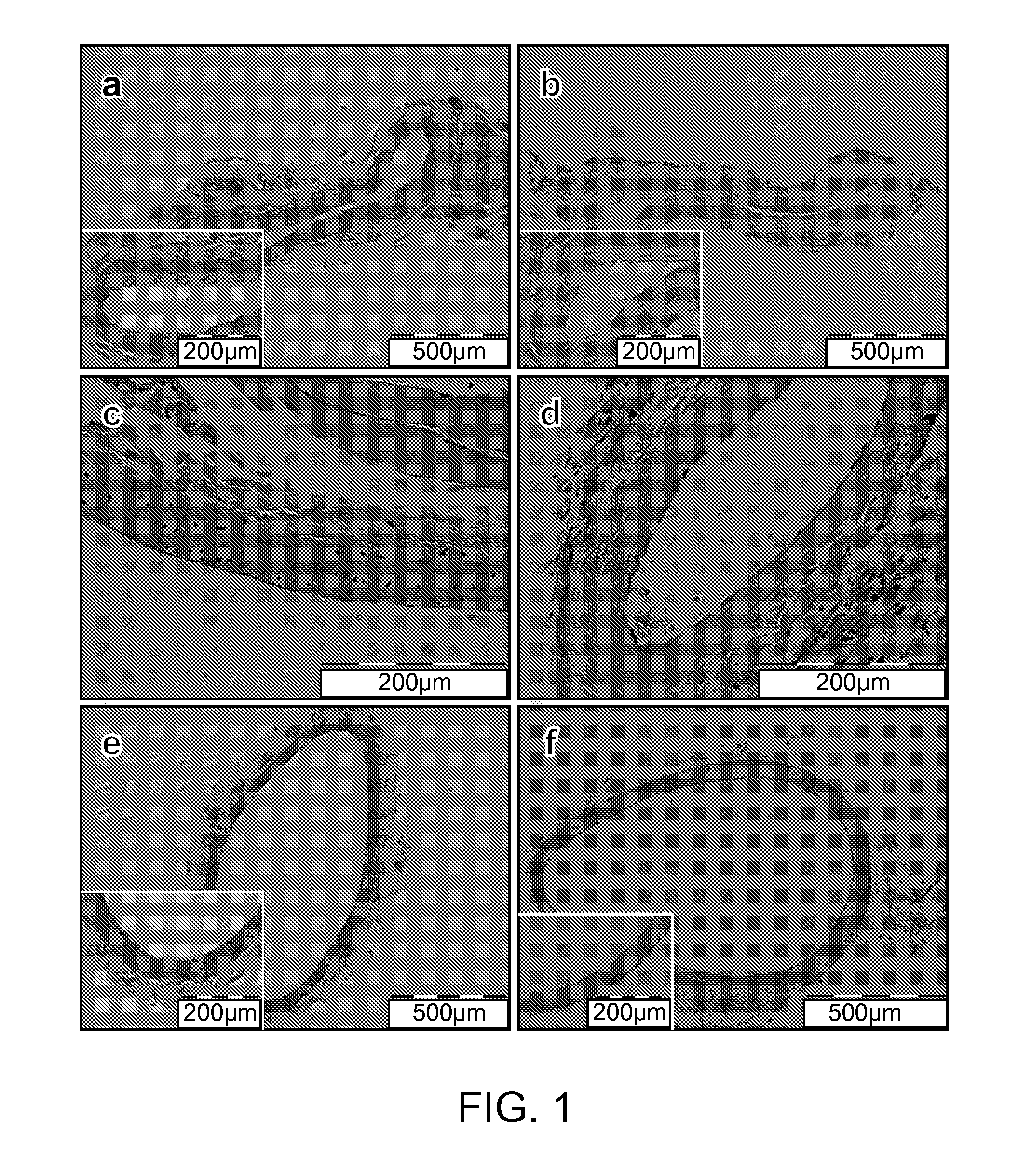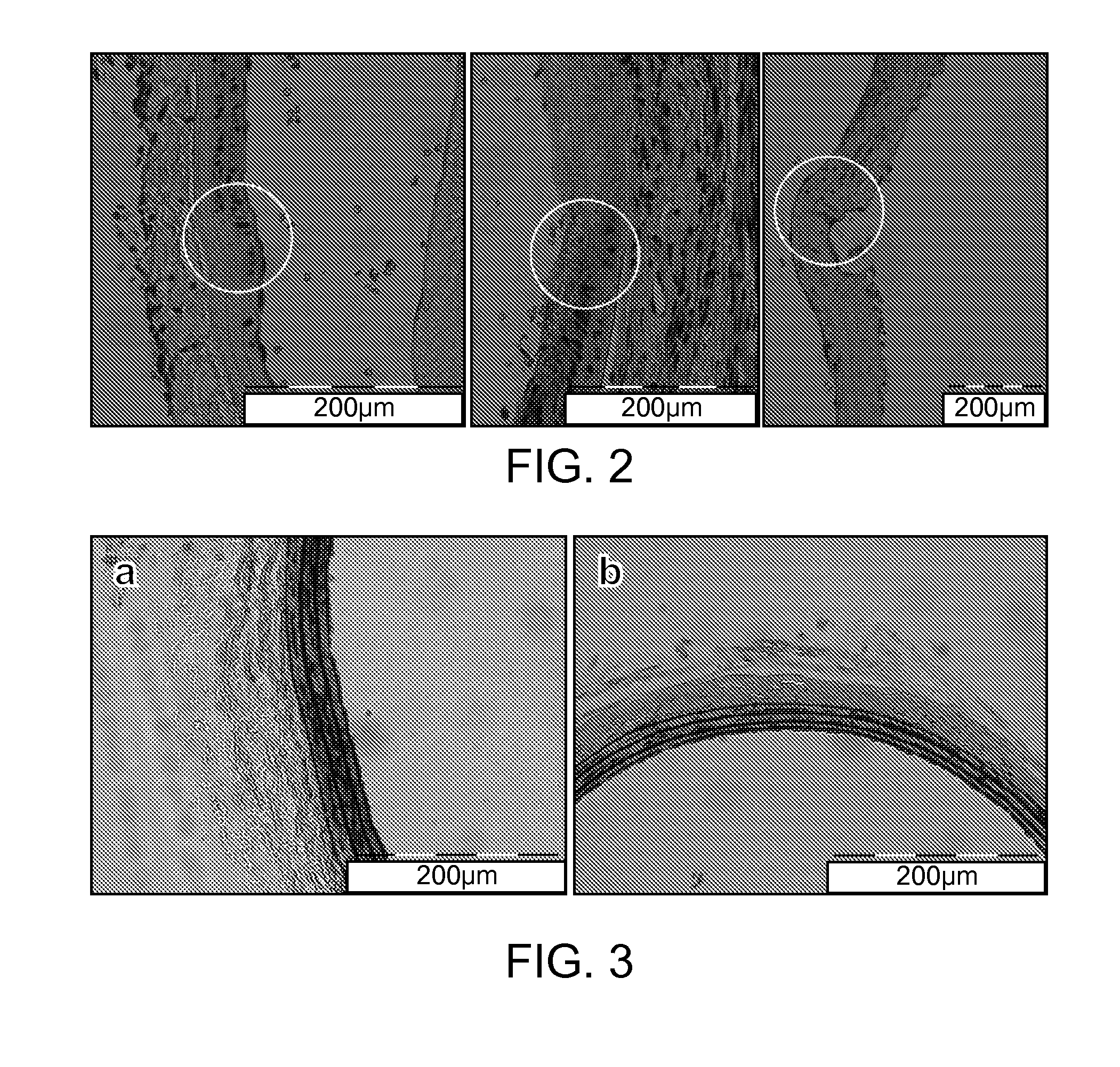Extracellular matrix material created using non-thermal irreversible electroporation
a technology of extracellular matrix and electroporation, which is applied in the field of extracellular matrix material, can solve the problems of increasing increasing the risk of infection, and not always being able to harvest autologous vessels, etc., and achieves the effect of reducing the risk of graph rejection and enhancing the resistance to infection
- Summary
- Abstract
- Description
- Claims
- Application Information
AI Technical Summary
Benefits of technology
Problems solved by technology
Method used
Image
Examples
example 1
Methods
[0071]The experimental protocol used here follows that used by Maor et. al. to ablate blood vessel cells with NTIRE for the treatment of restenosis18. Nine Sprague-Dawley rats weighing 200-300 grams were used in this study. All animals received humane care from properly trained professionals in compliance with both the Principals of Laboratory Animal Care and the Guide for the Care and Use of Laboratory Animals, published by the National Institute of Health (NIH publication No. 85-23, revised 1985).
[0072]Animals were anesthetized with an intramuscular injection of Ketamin and Xylazine (90 mg / kg and 10 mg / kg, respectively), and anesthesia was administered throughout the procedure with vaporized isoflurane. The left common carotid artery of each animal was exposed and a custom-made electrode clamp, as described previously15, was applied very close to the carotid artery's bifurcation. The measured distance between the electrodes was approximately 0.4 mm. A sequence of 90 dc puls...
PUM
| Property | Measurement | Unit |
|---|---|---|
| time | aaaaa | aaaaa |
| time | aaaaa | aaaaa |
| time | aaaaa | aaaaa |
Abstract
Description
Claims
Application Information
 Login to View More
Login to View More - R&D
- Intellectual Property
- Life Sciences
- Materials
- Tech Scout
- Unparalleled Data Quality
- Higher Quality Content
- 60% Fewer Hallucinations
Browse by: Latest US Patents, China's latest patents, Technical Efficacy Thesaurus, Application Domain, Technology Topic, Popular Technical Reports.
© 2025 PatSnap. All rights reserved.Legal|Privacy policy|Modern Slavery Act Transparency Statement|Sitemap|About US| Contact US: help@patsnap.com


